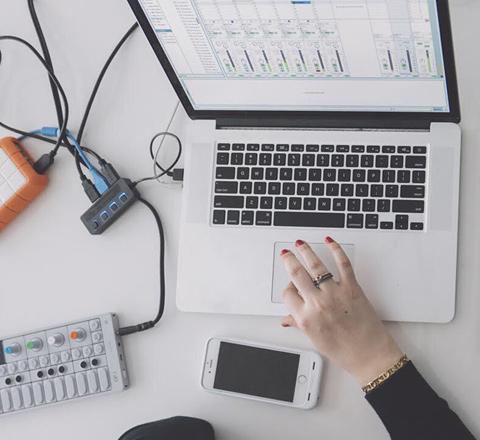Making music in the Digital Age

Jean-Claude Elias, The Jordan Times
You do not trust all the images you see on the web. Do you trust the music you hear?
If sometimes you do not believe the images you see on the network in general and on social media in particular, it is because you suspect they have undergone digital manipulation and are not a true reflection of reality. Photo editing and alteration of all kinds has become easy and affordable. Examples abound and are no more exceptional cases.
From the simple want to please with better looking images, be it stills or videos, to straightforward deceit and forgery, digital images lend themselves to extraordinary alteration. The software tools are accessible to the masses and very affordable — many are free, especially when used on smartphones.
Excessive image manipulation is but one aspect of the power of digital audio-visuals. Whereas the public always speaks at length of image processing and of the tools that go with it, making music in the digital age is no less spectacular, though the technology is not as publicised as that of the images. So, in the same vein, can we trust the music we hear today, or cannot we?
Absolutely amazing, the new tools to perform and more particularly to record music are beyond simple description. Examples.
Jam Origin has an app called MIDI Guitar 2 that generates the sound of virtually any instrument you can think of, by letting you play a regular, traditional electric guitar. MIDI stands for Musical Instrument Digital Interface and was introduced circa 1993.
The audio signal of your guitar is fed into the software first and then either to a digital MIDI keyboard or even simply to the software synthesiser that virtually all computers have built-in. Play the guitar and hear the very notes you are playing sound as an organ, a flute, a piano, etc. in real time. There is a delay of a few milliseconds between the note you pick on the guitar and the resulting sound processed by the app, but you hardly notice it.
German company Celemony offers a software tool called Melodyne. You play or sing and record your performance. Melodyne can then convert it into digital MIDI so you can do whatever you like with it afterwards. The possibilities are infinite, just like playing with numbers is a limitless game.
And if you fear not singing perfectly in tune take heart, Antares AutoTune can adjust your pitch to make it as perfect as the most professional singer in the world. Its harmoniser module can even “sing” in harmony with you, this way generating notes you never sang yourself in the first place.
Then comes a mile-long list of special effects that you can apply to the recording in the post-production phase. From unbelievably realistic delays and echoes, to compression, time-stretch, tremolo, vibrato, “smooth enhancers”, and so forth.
Editing the recording can be done at 1/1000th second surgical precision and single notes can be corrected, replaced, moved, duplicated, erased.
It is therefore very different today to listen to recorded, heavily manipulated music and to raw, unprocessed live performances by artists. The gap between the two cases has always been there but it is wider now. Processed sound can be as unbelievable as processed images.
The parallel between digital images and digital sound is as valid as ever, for in both cases and as incredible as the technical possibilities may be, they do not by themselves make you better photographers or better musicians.




